Liver Biopsy
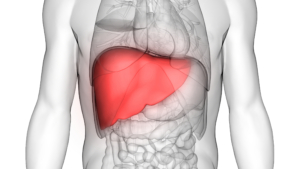
What Is A Liver Biopsy And When Do You Need It?
A liver biopsy is a medical operation that involves surgically removing a tiny sample of liver
tissue to be evaluated in a laboratory. Biopsies of the liver are commonly performed to
diagnose diseases like cirrhosis or to detect infection, inflammation, or malignant cells.
While imaging tests like CT scans and X-rays can help identify areas of concern, they can’t
always give an exact diagnosis or determine the best treatments options. For this, you need
a biopsy.
When your doctor cannot determine whether you have a liver problem that cannot be
detected by lab tests, but you continue experience the following symptoms:
• A swollen liver
• The skin and eyes turn a yellowish colour (jaundice)
• Lab tests that are abnormal and signal liver illness
However, if blood or imaging tests reveal that your liver is malfunctioning, your doctor may
conduct a liver biopsy.
Although biopsies are typically associated with cancer, it doesn’t mean you have cancer if
your doctor orders this test.
For the most part, biopsies can be done to determine whether you have a condition like:
• Hepatitis: This is a condition in which the liver becomes red and swollen (inflammation),
which can result in long-term damage. Viruses, illegal drugs, alcohol, parasites, and other
factors can cause it.
• Alcoholic liver disease. Liver damage caused by alcohol abuse.
• Liver tumour. An abnormal lump or mass of tissue. Tumours can be noncancerous (benign)
or cancerous (malignant).
• Fatty liver. A build-up of fat in the liver cells.
• Metabolic or autoimmune disease.
• Fibrosis of the liver. The growth of scar tissue due to infection, inflammation, injury, or
even healing.
How Is A Liver Biopsy Performed?
Just before the procedure, you’ll change into a hospital gown. Your doctor will give you a
sedative through an intravenous (IV) line to help you relax.
There are three basic types of liver biopsies:
• Percutaneous. Also called a needle biopsy, this biopsy involves putting a thin needle
through the abdomen and into the liver.
• Trans jugular. This procedure involves making a small incision at the neck. A thin, flexible
tube is inserted through the neck’s jugular vein and into the liver. This method is used for
people who have bleeding disorders.
• Laparoscopic. This technique uses tube-like instruments that collect the sample through a
small incision in the abdomen
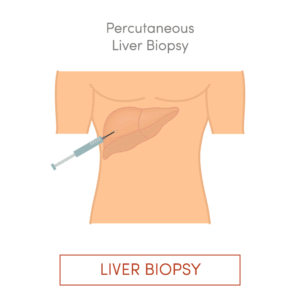
The kind of anaesthetic your doctor gives you will depend on which type of liver biopsy they
perform. The percutaneous and transjugular biopsies use local anaesthetics. This means
your doctor only numbs the affected area.
Laparoscopic biopsies require being under general anaesthesia, so you’ll be in a deep sleep
during the procedure.
Generally, a percutaneous liver biopsy follows this process:
• You will be asked to remove any clothing, jewellery, or other objects that may get in the
way of the scan.
• Will be given a gown to wear.
• Asked to go to the bathroom before the biopsy.
• An IV (intravenous) line may be started in your arm or hand. Some people are given IV
sedation and get sleepy for the biopsy.
• You will be placed on your back with your right arm above your head, or on your left side.
• Your provider will locate your liver by pressing on your abdomen. He or she will mark the
area where the biopsy will be done. An ultrasound, MRI, or CT scan may be used to find a
specific spot in the liver.
• The skin over your liver will be washed with a sterile (antiseptic) solution.
• You will feel a needle stick when the local anaesthetic is injected. This may cause a brief
stinging sensation.
• A needle will be put through your skin and into your liver very quickly. It is common to feel
pressure as the needle is pressed into your liver. You may feel mild pain in your shoulder
due to irritation of the phrenic nerve. This nerve passes down the shoulder and near the
liver.
• You will be asked to hold your breath as the needle goes quickly in and out of your liver.
Holding your breath stops your chest wall and diaphragm from moving. Any movement may
affect the placement of the biopsy needle. You should lie quietly without moving.
• The sample of liver tissue will be removed.
• Your provider may need more than 1 tissue sample. If so, you will hold your breath as the
needle is put quickly in and out of your liver again.
• The biopsy needle will be taken out. Firm pressure will be applied to the biopsy site until
the bleeding has stopped.
• A sterile bandage or dressing will be applied.
• The liver tissue sample will be sent to the lab for testing
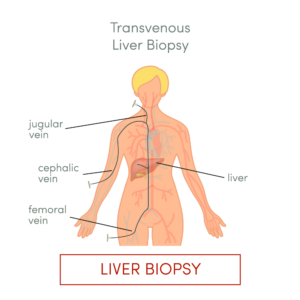
When your biopsy is complete, your doctor will close any incision wounds with stitches and
bandages. You’ll typically have to lie in bed for a few hours after the procedure while
doctors monitor your vital signs.
Once you receive approval from your doctor, you are free to go home. Take it easy and rest
for the next 24 hours. You should be able to get back to your normal activities after a few
days.
What To Do After Getting The Biopsy?
After the liver tissue sample is taken, it will be sent to a laboratory for testing. This could
take up to a few weeks. When the results are back, your doctor will call you or ask you to come in for a follow-up
appointment to share the results. Once a diagnosis is reached, your doctor will discuss any recommended treatment plans or
next steps with you.
Your recovery process will vary depending on the type of biopsy you had and your
provider’s practices. You may be taken to the recovery room to be watched if your biopsy
was done in a procedure room or in the radiology department.
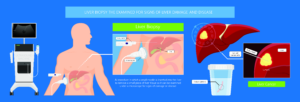
Once your blood pressure, pulse, and breathing are stable and you are alert, you may be
taken to a hospital room or discharged to your home.
You will be asked to rest quietly, lying on your right side, for 1 to 2 hours. This will put
pressure on the biopsy site. Depending on your condition and your provider's preferences,
you may be told to stay on bed rest for an additional 4 to 24 hours.
A blood sample may be taken a few hours after the biopsy to check for possible internal
blood loss.
If you are discharged home within a few hours after the procedure, you may be told to stay
on bed rest at home for a certain amount of time.
Leave the bandage in place for as long as instructed, usually until the next day.
You will be told to avoid intense activity, such as heavy lifting, for several days up to a week
or longer. You should not cough hard or strain for a few hours after the biopsy.
The biopsy site may be sore for a few days. Take a pain medicine as recommended by your
provider. Aspirin or other pain medicines may raise your risk of bleeding. Only take
medicines that your provider has approved.
Call your healthcare provider if you have any of the following:
• Fever or chills
• Redness, swelling, warmth, or bleeding
• More pain around the biopsy site or elsewhere
• Shortness of breath or trouble breathing
• Rectal bleeding
You may go back to eating normally unless your provider has other instructions.
Your healthcare provider may give you other instructions, depending on your situation.
How Should You Prepare For A Biopsy?
Biopsies don’t require much preparation. Depending on your condition, your doctor may ask
you to:
• Your healthcare provider will explain the procedure to you. Ask him or her any questions
you have about the procedure.
• You may be asked to sign a consent form that gives permission to do the procedure. Read
the form carefully and ask questions if anything is not clear.
• Your provider will ask questions about your past health. He or she may give you a physical
exam. This is to make sure you are in good health before you have surgery. You may also
need blood tests and other diagnostic tests.
• Tell your provider if you are sensitive to or allergic to any medicines, latex, tape, and
anaesthesia medicines (local and general).
• Tell your provider about all the medicines you take. This includes both over-the-counter
and prescription medicines. It also includes vitamins, herbs, and other supplements.
• Tell your provider if you have a history of bleeding disorders or if you are taking any blood-
thinning (anticoagulant) medicines, aspirin, ibuprofen, or other medicines that affect blood
clotting. You may need to stop taking these medicines before the biopsy.
• Tell your provider if you are pregnant or think you may be pregnant.
• You may be asked to not eat or drink anything before the biopsy. This often means no
food or drink after midnight. Your provider will give you specific instructions.
• You may be given medicine to help you relax (a sedative) before the surgery. Because the
sedative may make you drowsy, someone must drive you home.
Your healthcare provider may have other instructions for you based on your medical
condition.
Things To Remember:
Before you agree to the test or the procedure make sure you know:
• Name of the test
• Reason you are having the procedure
• Risks and benefits
• Where you are to have the test and who will do it
• When will you get the results
• How much you have to pay for the test or procedure.
How Much Does A Liver Biopsy Cost?
While by now you’re informed of all the details of what a liver biopsy entails, let’s also cover
the monetary aspect. While most biopsies are expensive, it really does depend on the type of liver biopsy you
need to get. Below is a list of major countries across the globe offering liver biopsies (starting with the
lowest):
India: Rs 4,000 – Rs 5,000
Nigeria: 60,000 – 80,000 Naira
UK: £500
Republic of Korea: ₩76,8,374 – ₩15,36,749
UAE: DH 600 – 1,200
USA: $1558 -$3939
Note: These aren’t fixed prices. These prices may vary according to the changing economy,
individual cases and the institutions involved.
Citation & Sources:
Liver Biopsy. (2021). Retrieved 4 October 2021, from
https://www.healthline.com/health/liver-biopsy (Healthline, 2021)
Liver Biopsy. (2021). Retrieved 4 October 2021, from
https://www.google.com/amp/s/www.hopkinsmedicine.org/health/treatment-tests-and-therapies/liver-biopsy%3famp=true (Johns Hopkins Medicine, n.d.)




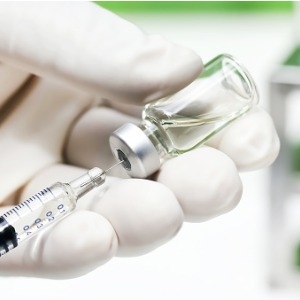

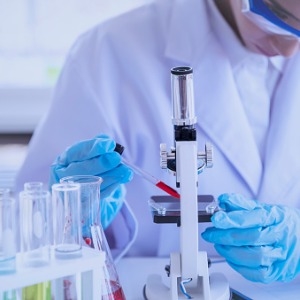
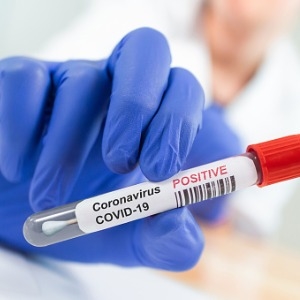








Leave a Reply
Want to join the discussion?Feel free to contribute!